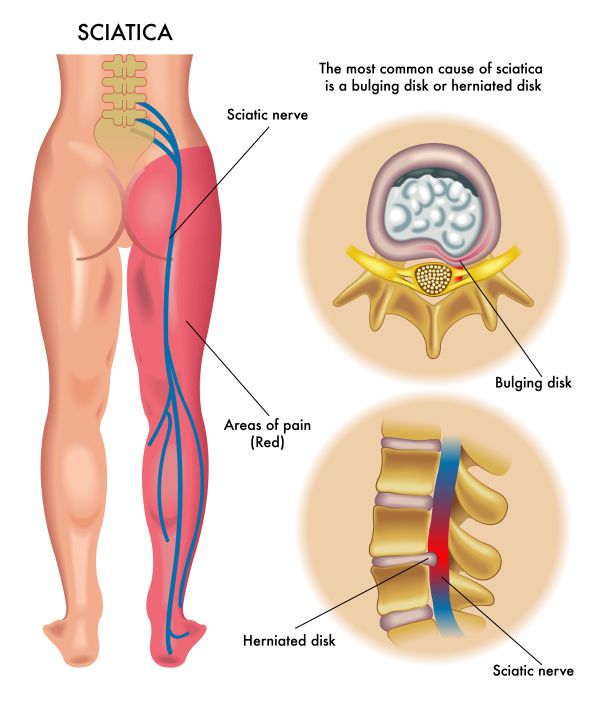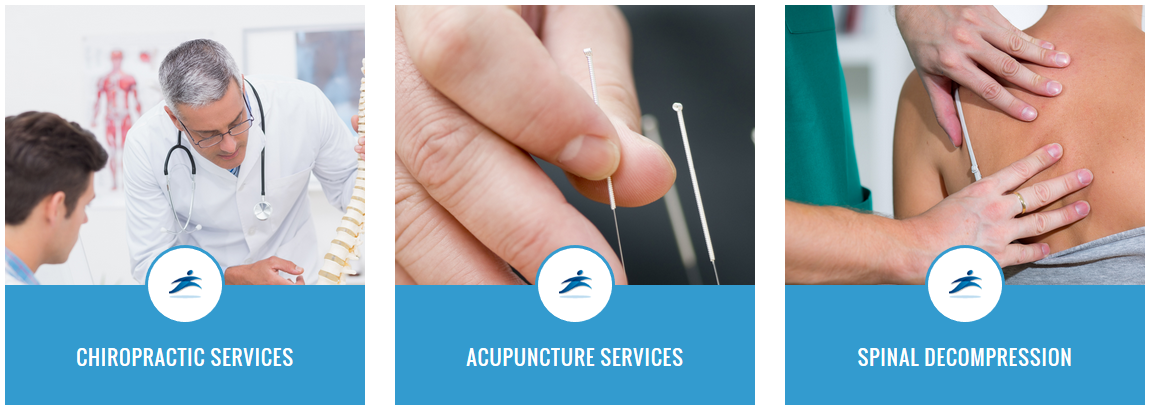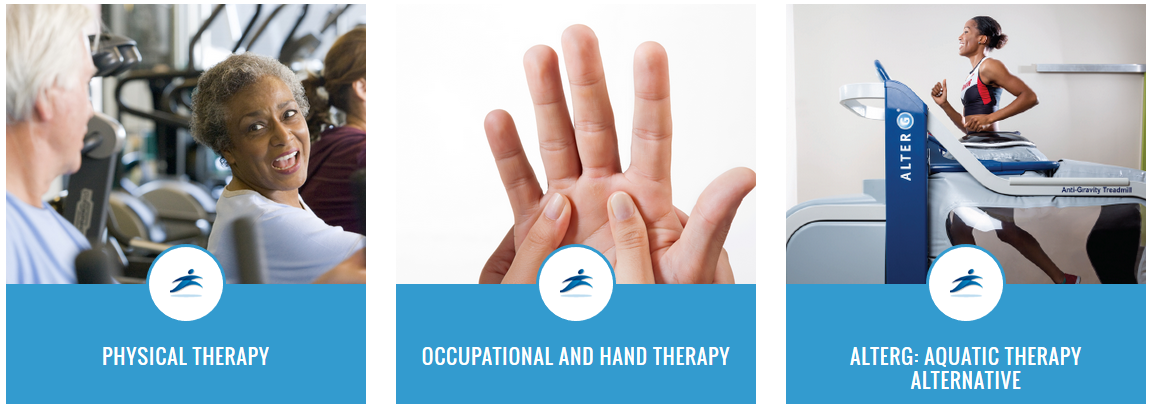What is Sciatica?
You have probably heard of someone suffering of sciatica. But what is sciatica? Sciatica is a condition in which the sciatic nerve that runs down your leg becomes irritated due to pressure. The pain can affect the back, hip, and outer part of the leg. Pain may come in jolts or be pretty constant, certain movements such as getting up off a chair may make the pain worse. Patients can have different degrees of pain – some may find the issue quite severe to the point where it affects their daily activities. What causes sciatica? The causes of sciatica can be: a herniated/slipped disc (most common), piriformis syndrome, spinal stenosis, or spondylolisthesis.
Before explaining the causes, we need a basic understanding of the spinal column. Your spine is made up of 24 bones, called vertebrae, that form a column. In-between each vertebrae is a circle of cartilage called a disc which allows movement of the spine. These discs are made up of cartilage that have a gel like substance inside of them. Inside the column of vertebrae is bundle of nerve tissue called the spinal cord which is very sensitive and connects your brain to your body via nerves.
Herniated/Slipped Disc
A herniation occurs when the disc splits and the gel like substance from within starts leaking out. This can put pressure on nerve roots which cause pain. If a herniation happens in the lumbar spine, the pressure could be placed on the sciatic nerve causing sciatica.
Piriformis Syndrome
The piriformis is a muscle that attaches the lumbar spine to the femur (main bone of the thigh). The sciatic nerve connects to nerve roots in the lumbar spine and runs down your leg. The nerve should normally run below the piriformis. However, if the piriformis is irritated or inflamed, it could cause a literal pain in your rear, and even worse could put pressure on the sciatic nerve.
Spinal Stenosis
If the cavity in which the spinal column is housed is narrowed (stenosis), pressure could then be placed on the spinal column causing pain. This usually occurs in the lumbar spine (lower back) and can cause sciatica.
Spondylolisthesis
Spondylolisthesis when one vertebrae slips forward over the one below it. This can cause spinal stenosis, sciatica, or both. Again this usually occurs in the lower back.
Prevention
Now that you have a better understanding of what causes sciatica, how can one prevent it? Most of the conditions listed above are cause by weakness in the back, specifically the lumbar or lower back. That being said here are a few ways to prevent sciatica! If you’re already suffering from back pain then you’ll probably want to be seen by one our chiropractors to assess your condition.
- Practice proper form when exercising – try working out with a partner or in front of a mirror so you can watch your form
- Exercise regularly – exercising 3 times a week is a good sweet spot to aim for
- Strengthen your glutes – a strong core supported by strong glutes can and will prevent injuries
- Strengthen your abdominals – a strong core can prevent a ton of different injuries
- Lose Weight – even losing as little as 5 pounds can lessen the stress on your joints and muscles
- Avoid cigarettes(helps prevent degenerating discs)
- Learn proper posture and practice regularly – if you sit often, make sure you check out these exercises to keep you limber
- Don’t sit for too long – take a break every hour to get up and do a 1-3 mintue stretching routine, or take a short walk to the copy machine to pass the time
- Regular massage or Self Myofacial Release(SMR or Self Massage) – if you have the time to spare, these massages can do wonders for your muscles and pain
- Make sure to get adequate amounts of Magnesium in your diet(helps prevent muscle spasms)
Do you, or someone you know experience neck pain at the workplace and/or limited function?
[standardButton link=”https://spineandsportsmed.com/contact/” margin_top=”0″ margin_bottom=”0″ target=”_self” icon=”” animated=”off” class=””]Contact Us[/standardButton]




